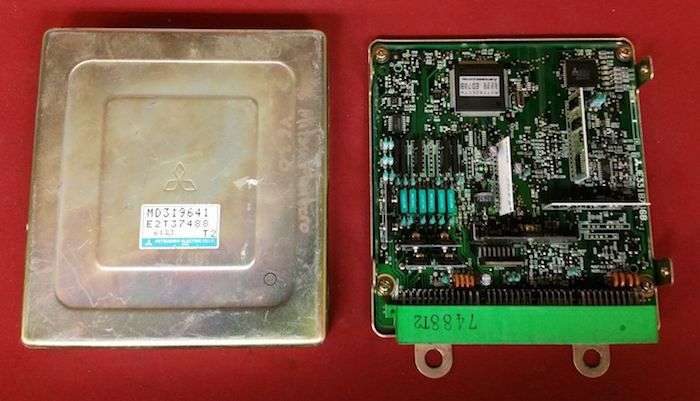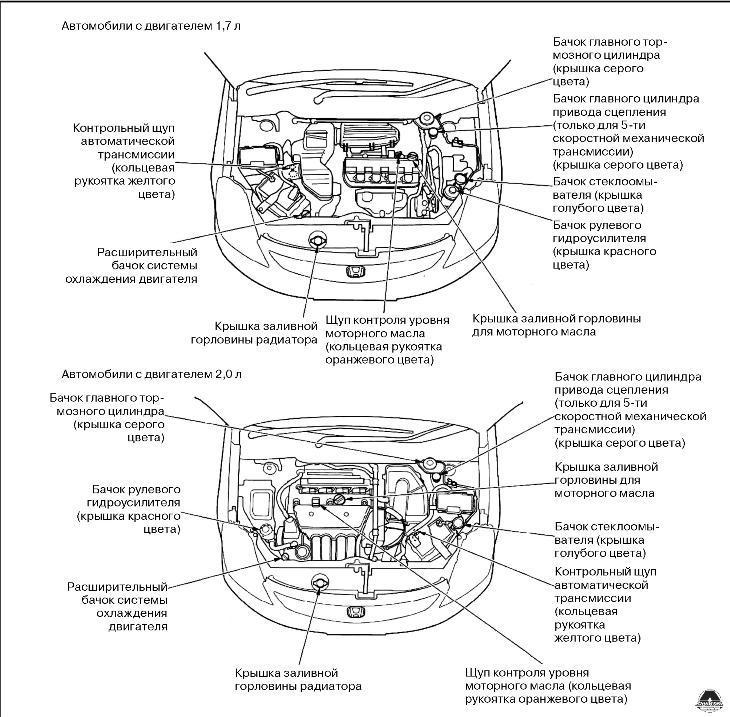
P0690 Engine/Transmission Control Module (ECM/PCM) Power Relay Sensor Circuit High
Content
P0690 – OBD-II Trouble Code Technical Description
Trouble code P0690 indicates that the engine control module (ECM) or powertrain control module (PCM) power relay circuit voltage is too high.
What does the fault code mean P0690?
Trouble code P0690 indicates that the engine control module (ECM) or powertrain control module (PCM) power relay control circuit has detected a voltage that is too high, above the manufacturer's specifications.

Possible reasons
Some possible reasons for the P0690 trouble code:
- Power relay fault: A defective power relay that does not provide enough voltage to the ECM or PCM may be the root cause of this error.
- Damaged wires or connections: Opens, shorts or damage in the wires or connections between the power relay and the ECM/PCM can cause insufficient power and cause P0690.
- Battery problems: Battery failure or insufficient charging voltage may also cause this error.
- Defective ignition switch: If the ignition switch does not transmit the power relay signal properly, it can cause trouble code P0690.
- Problems with the ECM or PCM: A malfunction in the Engine Control Module (ECM) itself or the Powertrain Control Module (PCM) can also cause this DTC.
- Grounding: Improper or insufficient circuit grounding can also cause problems with power to the ECM or PCM and therefore cause P0690.
These reasons can cause the P0690 code either individually or in combination with each other. To accurately determine the cause, it is necessary to carry out diagnostics using specialized equipment and tools.
What are the symptoms of a fault code? P0690?
Symptoms for DTC P0690 may include the following:
- The Check Engine light comes on: This is one of the most obvious symptoms when the Check Engine light comes on on your vehicle's dashboard, indicating that there is a problem with the engine management system or electronic components.
- Loss of engine power: Due to high voltage in the engine or powertrain control circuit, there may be a loss of engine power or unstable operation.
- Engine instability: May manifest as rough idle, jerky acceleration, or slow throttle response.
- Gear shifting problems: High voltage in the control circuit may cause the automatic transmission or other components responsible for shifting to malfunction.
- Operation in emergency mode (limp mode): In some cases, the vehicle may go into limp mode, limiting engine functionality to prevent further damage.
- Unstable operation of the fuel or ignition control system: High voltage may affect the operation of the fuel injection system or ignition system, which may cause engine instability.
These symptoms may occur to varying degrees depending on the specific cause and the operating conditions of the vehicle.
How to diagnose a fault code P0690?
To diagnose DTC P0690, you can follow these steps:
- Scanning error codes: Use a car scanner to read error codes in the engine management system. Make sure the P0690 code is present and not a random fault.
- Battery check: Check the condition of the battery and make sure its voltage is within normal limits. High voltage may be due to a malfunctioning alternator or charging problems.
- Checking the power relay: Check the power relay providing power to the ECM or PCM. Check its integrity and correct operation, as well as the condition of the connections and wires connected to it.
- Wiring diagnostics: Inspect the wiring, connections and connectors between the power relay and the ECM/PCM for corrosion, opens or shorts. Make sure the wiring is in good condition and connections are secure.
- Checking the ignition switch: Make sure the ignition switch is sending the signal to the power relay properly. If necessary, replace or repair the switch.
- Check ECM/PCM: If all other components and connections are checked and working properly, the problem may lie directly with the ECM or PCM. Run additional tests to verify their functionality.
- Carrying out test tests: If necessary, use a multimeter or other diagnostic tools to measure voltage at various points in the system and check the operation of components.
- Finding Additional Error Codes: Check for other related error codes that may help determine the root cause of the problem.
In case of difficulties or impossibility to carry out diagnostics yourself, it is recommended to contact a qualified auto mechanic or car service center for professional assistance.
Diagnostic errors
When diagnosing DTC P0690, the following errors may occur:
- Incorrect interpretation of code: The error may be a misunderstanding of the P0690 code or its symptoms. Incorrect diagnosis can lead to replacing unnecessary components or missing the real cause of the problem.
- Insufficient wiring check: If the wiring and connections between the power relay and the ECM/PCM are not checked carefully, it may result in missed breaks, corrosion, or other wiring problems.
- Skipping Additional Tests: Certain components, such as the ignition switch or battery, can cause high voltage in a circuit, but sometimes these components can be missed during diagnosis.
- Incompatible diagnostic tools: Using unsuitable or incompatible diagnostic tools or scanners may result in incorrect data analysis or incorrect reading of error codes.
- Ignoring additional symptoms: High voltage on the power relay circuit may cause additional symptoms such as battery charging problems or engine roughness. Ignoring these symptoms may lead to an incomplete diagnosis.
- Wrong diagnostic order: Not following a logical order in diagnosis, starting with simple tests and moving to more complex ones, can make it difficult to identify the cause of the problem.
- Ill-conceived renovation: Taking repair action without sufficient diagnostics and data analysis may result in unnecessary costs for replacing components that could have been corrected by simpler methods.
To successfully diagnose the P0690 trouble code, it is important to conduct a thorough and systematic check for all possible causes and use the correct diagnostic tools and techniques.
How serious is the fault code? P0690?
The severity of the P0690 trouble code can vary depending on the specific circumstances and reasons for its occurrence. In general, this code indicates a problem with the power relay control circuit, which can affect the operation of the engine and other vehicle systems. Voltage outside the normal range can cause the engine to malfunction, lose power, and cause other problems such as limp mode or even potential engine damage.
In some cases, such as if the problem is a malfunctioning power relay or unstable circuit voltage, the vehicle may become unstable and unreliable for road use. However, if the cause is a smaller issue such as improper grounding or a short circuit, then it may be a less serious problem.
In any case, the P0690 code should be considered serious as it indicates potential problems with the engine management system that could affect the safety and performance of the vehicle. Therefore, it is recommended to diagnose and eliminate the cause of the error as soon as possible.
What repair will help eliminate the code? P0690?
Troubleshooting trouble code P0690 may include the following steps:
- Checking and replacing the power relay: The first step may be to check the power relay that provides power to the ECM or PCM. If the relay is found to be faulty, it should be replaced.
- Checking and repairing wiring: Carefully check the wiring and connections between the power relay and the ECM/PCM for breaks, corrosion or other damage. If necessary, repair or replace damaged wires and connections.
- Checking and replacing the ignition switch: Make sure the ignition switch is sending the signal to the power relay properly. If necessary, replace or repair the switch.
- ECM/PCM Inspection and Replacement: If all other components and connections are checked and working properly, the problem may lie directly with the ECM or PCM. In this case, the corresponding module may need to be replaced or repaired.
- Additional measures: Depending on the diagnostic results, additional measures may be required, such as checking the ground, replacing the battery, or other repairs.
It is important to note that in order to successfully resolve the P0690 code, the cause of the problem must be properly diagnosed. It is recommended that you contact a qualified auto mechanic or auto repair shop for diagnostics and repair work.
P0690 – Brand-specific information
Trouble code P0690 indicates a high signal level in the Engine/Transmission Control Module (ECM/PCM) power relay sensor circuit. This can be caused by various reasons, such as improper relay operation, short circuit, broken wiring, etc. Below are explanations and information for specific car brands:
- Ford:
- Malfunction code: P0690
- Description: Short circuit in the PCM (Powertrain Control Module) power relay circuit.
- Chevrolet / GMC:
- Malfunction code: P0690
- Description: General error related to the Engine Control Module (ECM/PCM) power relay circuit.
- Toyota:
- Malfunction code: P0690
- Description: High signal level in the ECM (Engine Control Module) or PCM power relay circuit.
- Volkswagen/Audi:
- Malfunction code: P0690
- Description: The ECM or PCM power relay sensor circuit is high.
- Honda:
- Malfunction code: P0690
- Description: There is a malfunction in the PCM power relay sensor circuit.
- BMW:
- Malfunction code: P0690
- Description: PCM power relay sensor circuit high.
- Mercedes-Benz:
- Malfunction code: P0690
- Description: There is an error in the ECM or PCM power relay circuit.
This is only general information, and in order to more accurately determine and eliminate the problem, it is necessary to carry out additional diagnostics and testing of the specific vehicle.


One comment
Shop for Beit Aveo
p0690 The car does not start